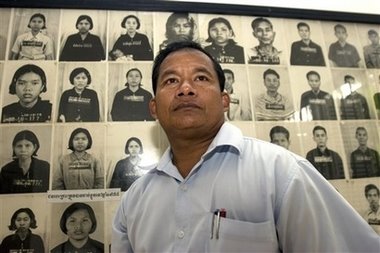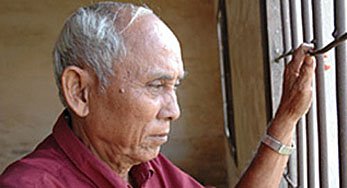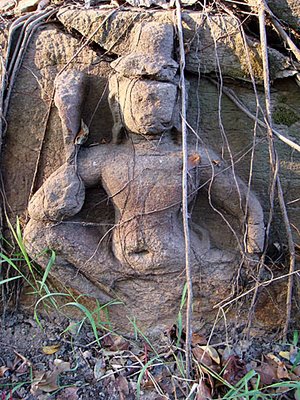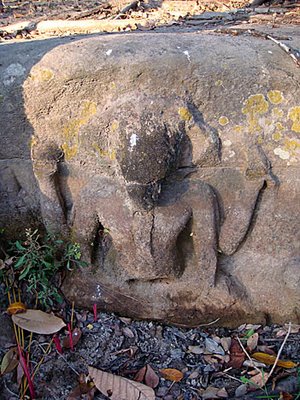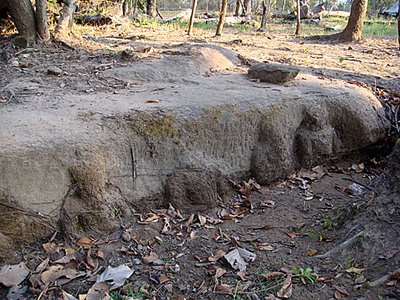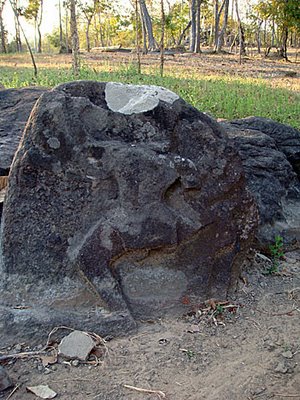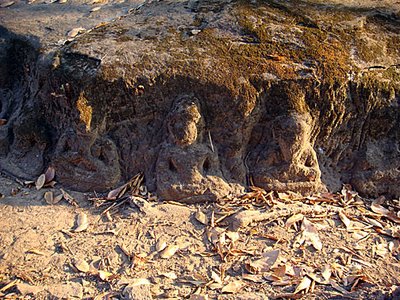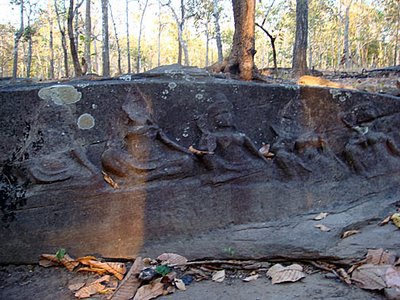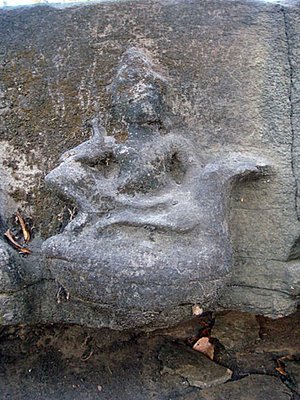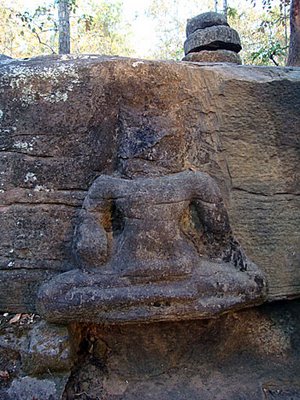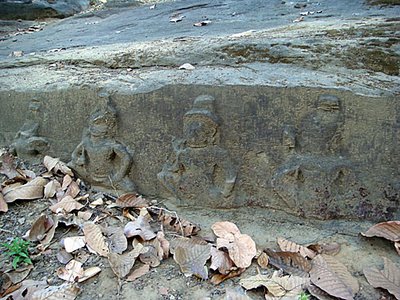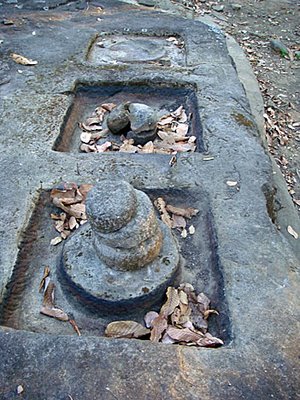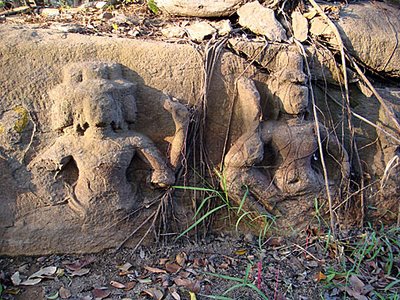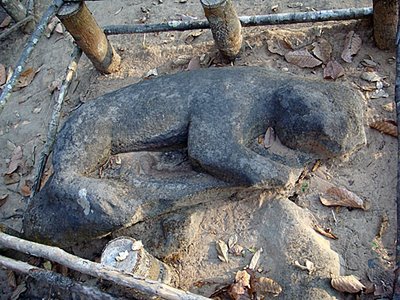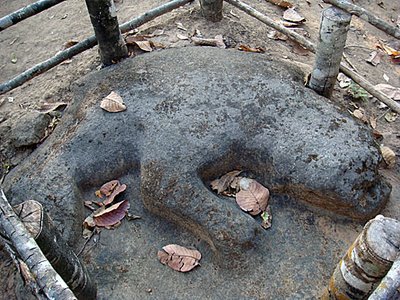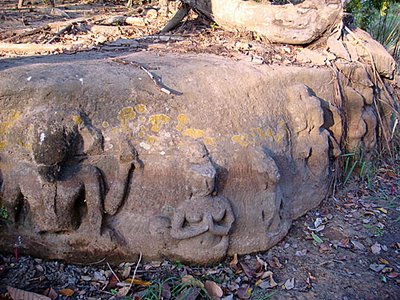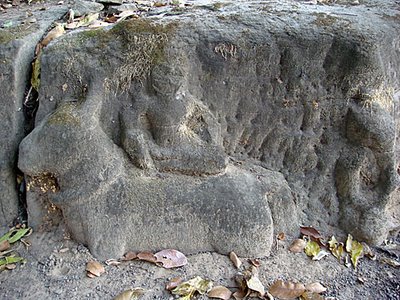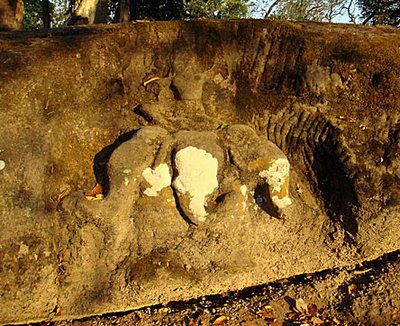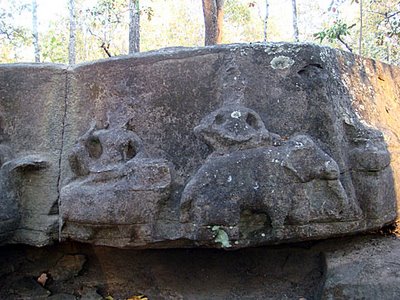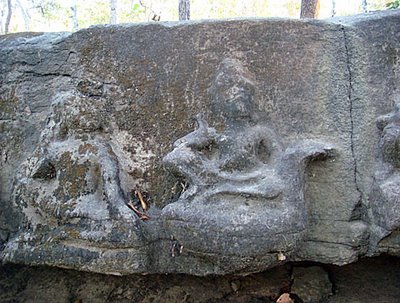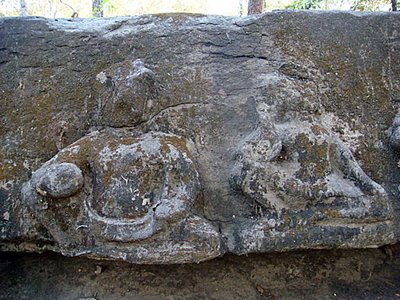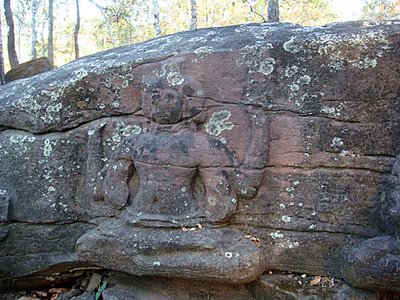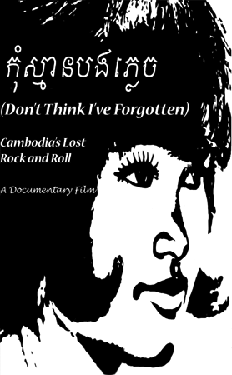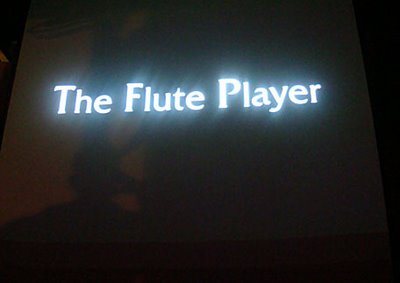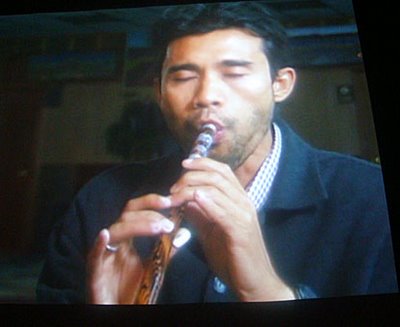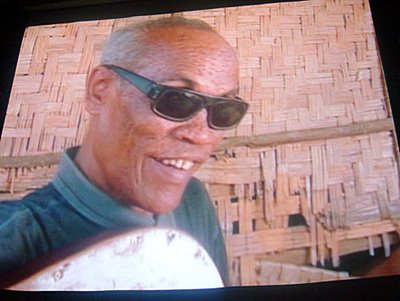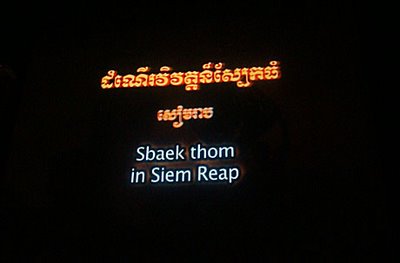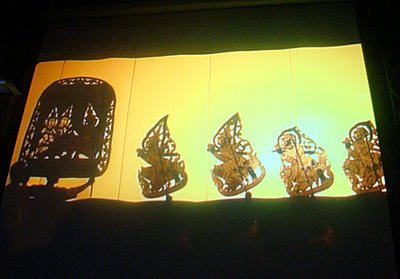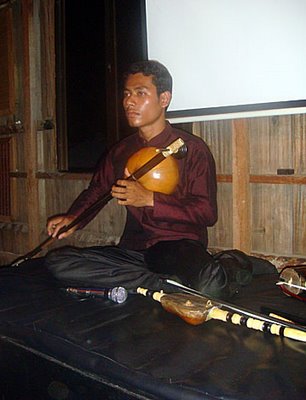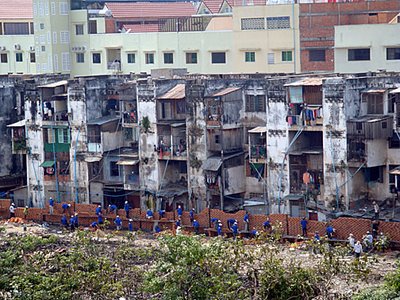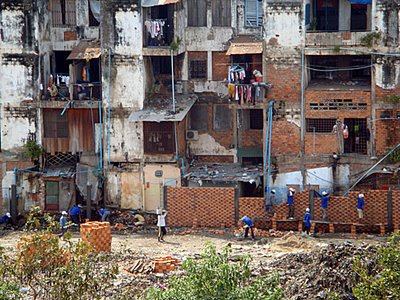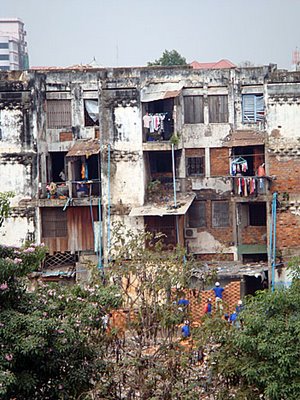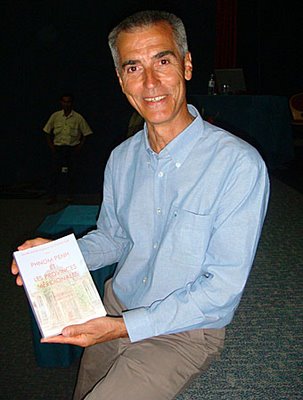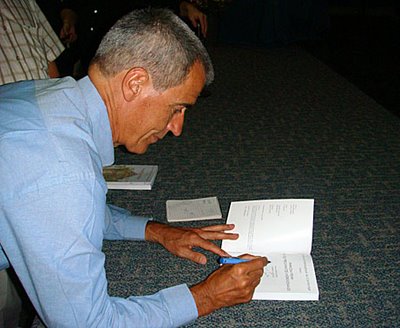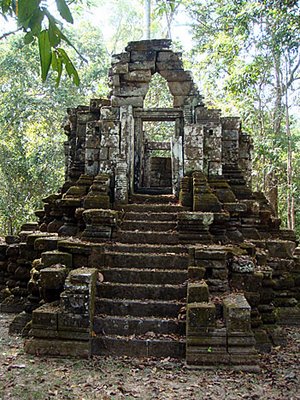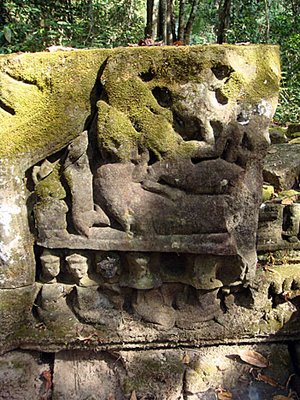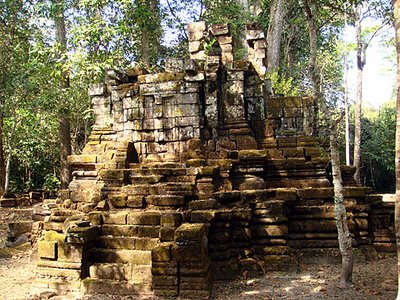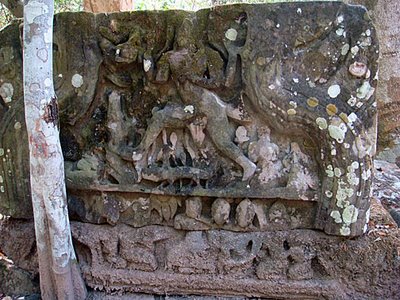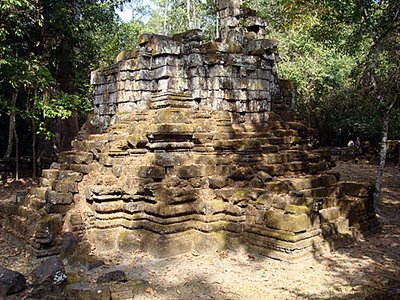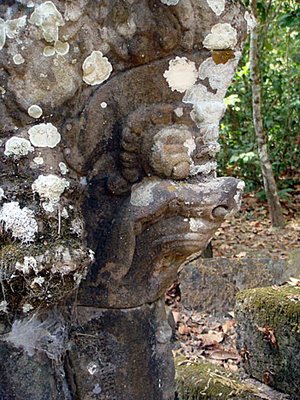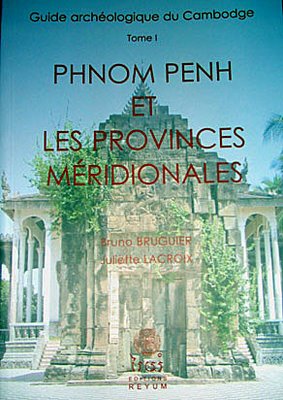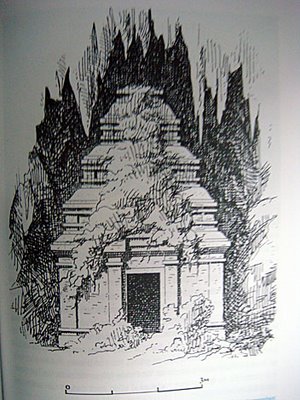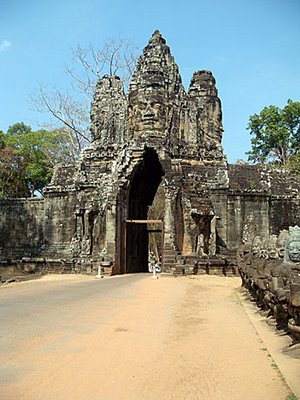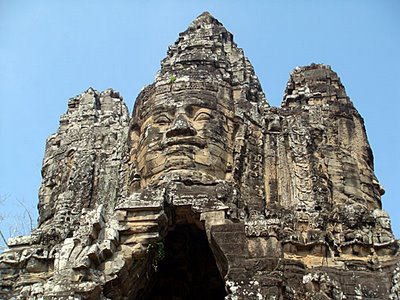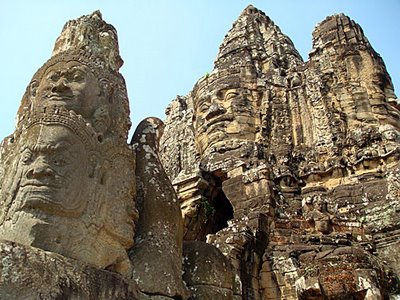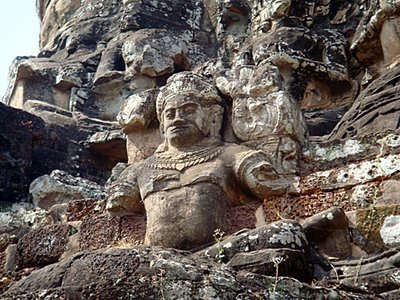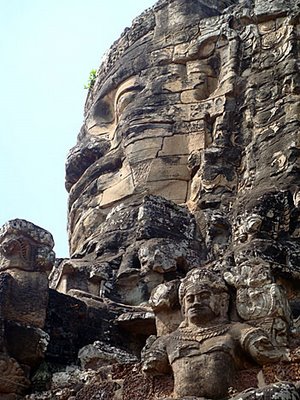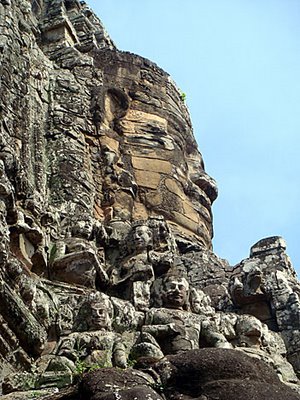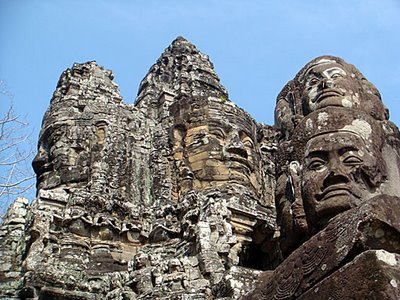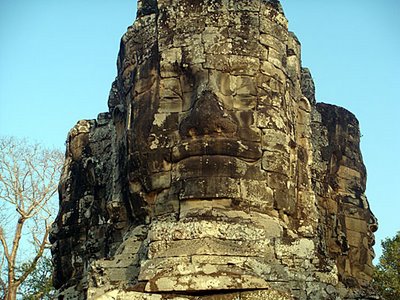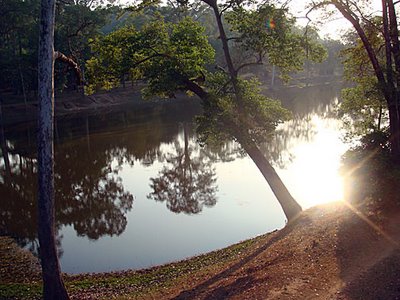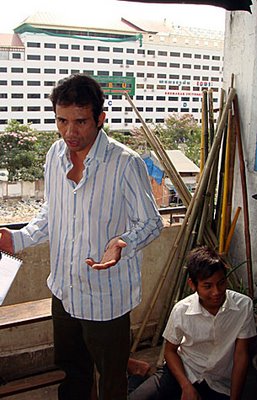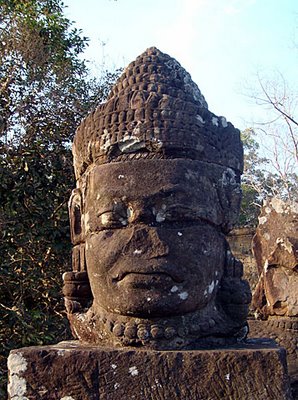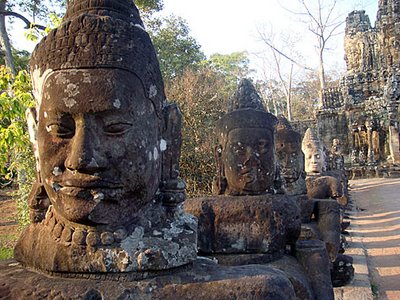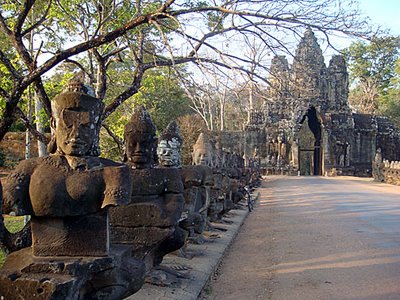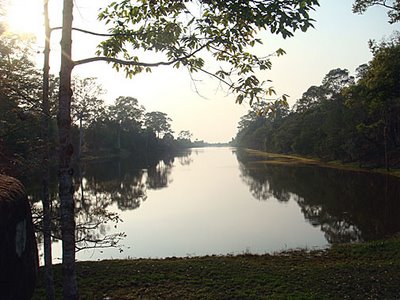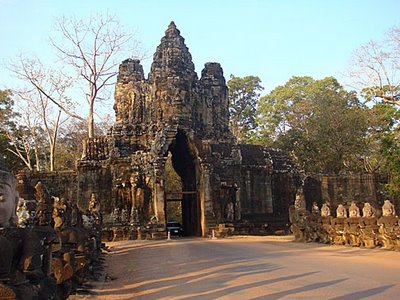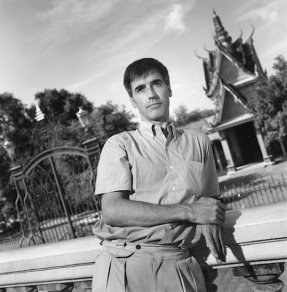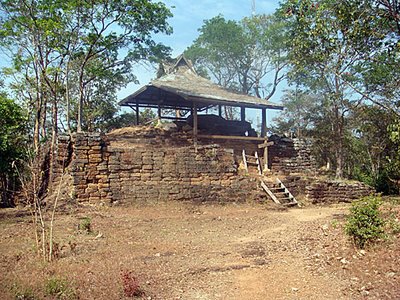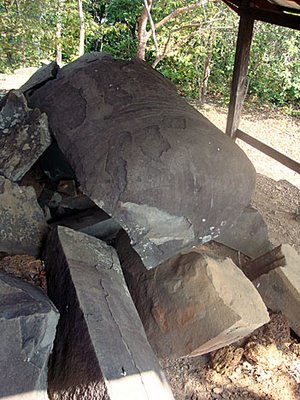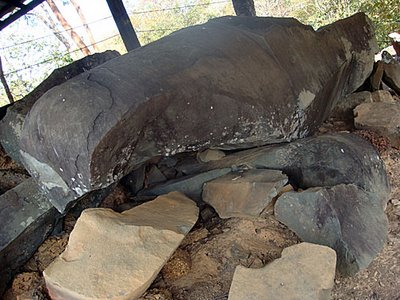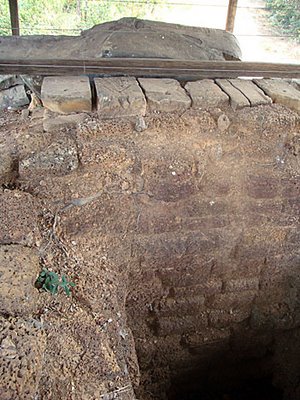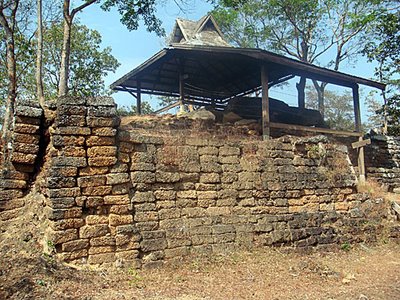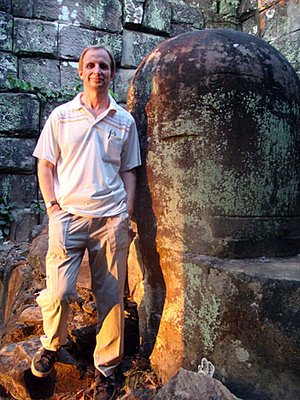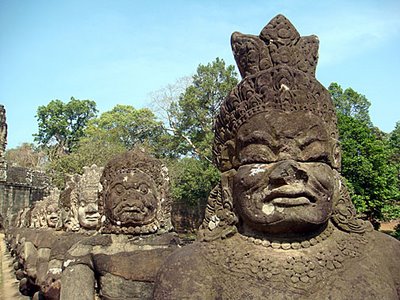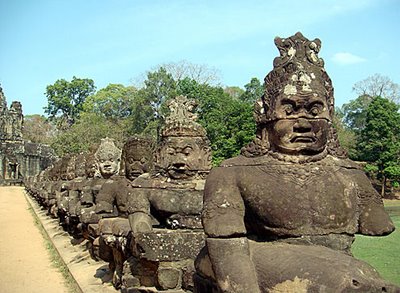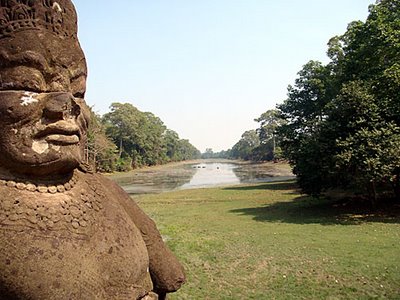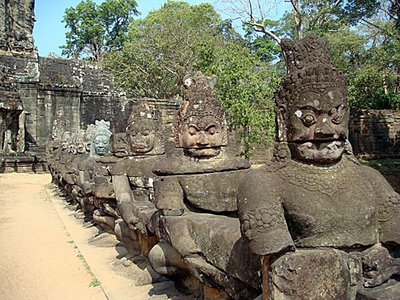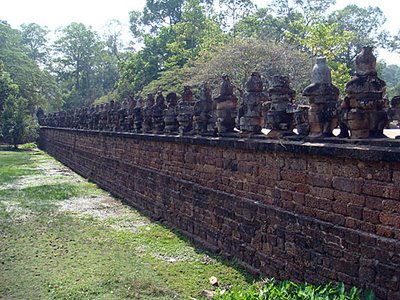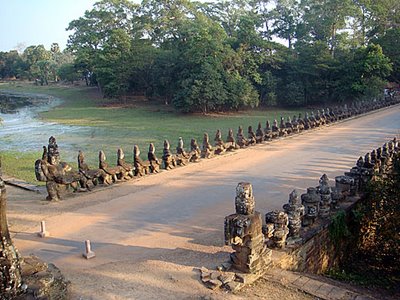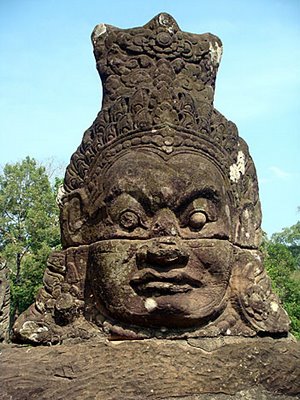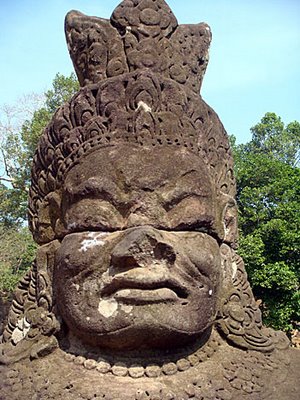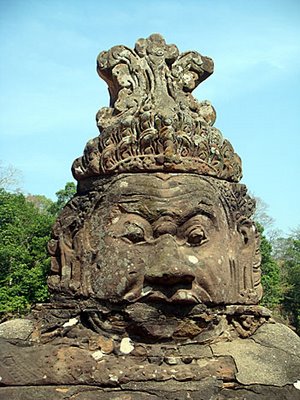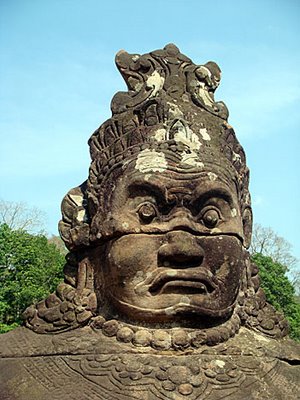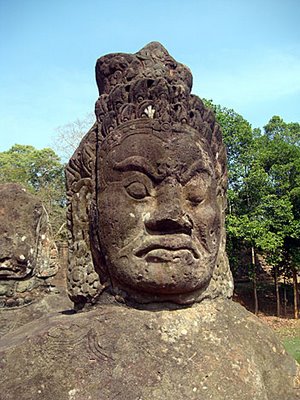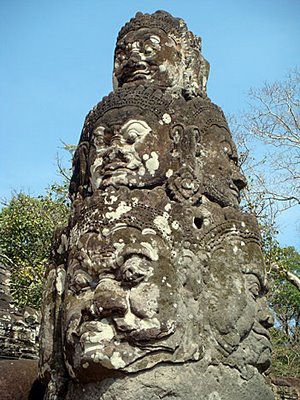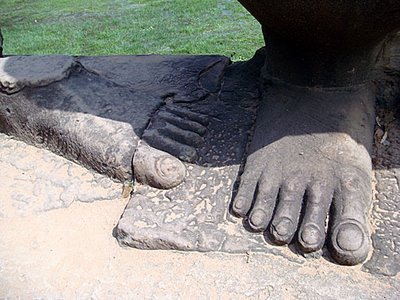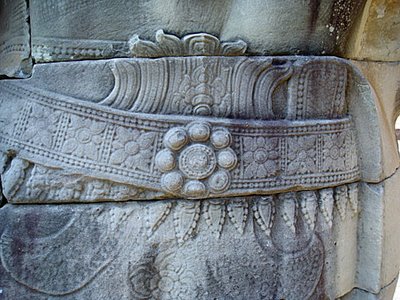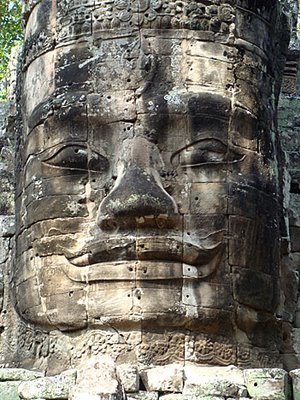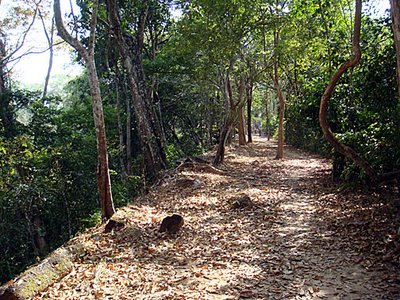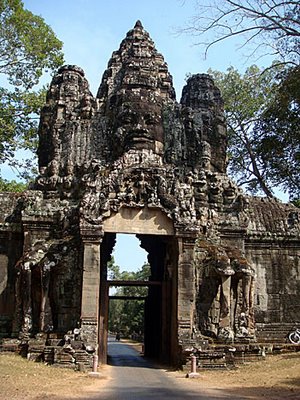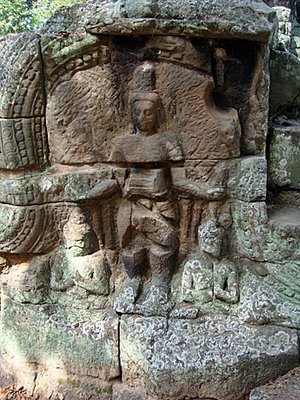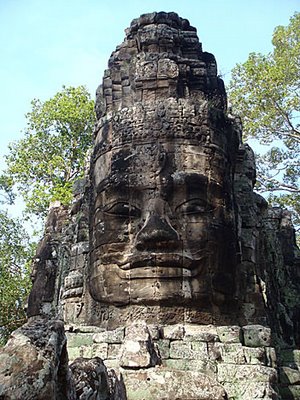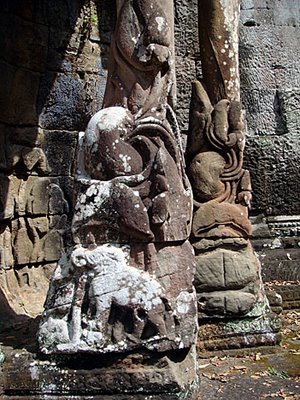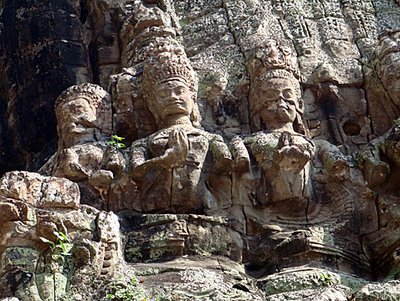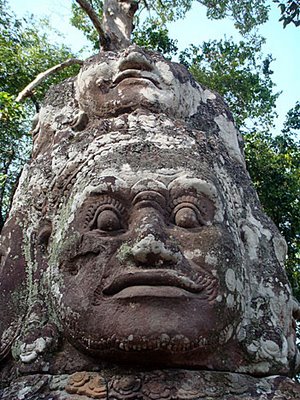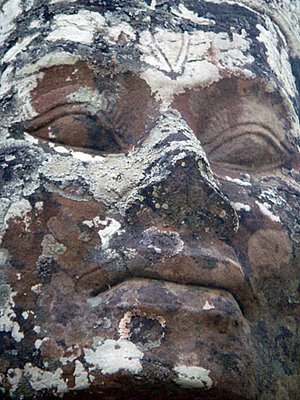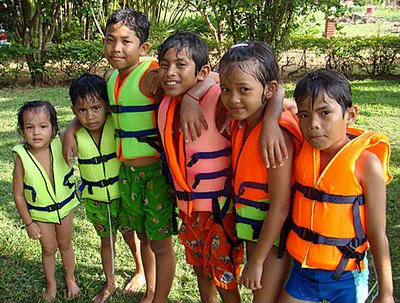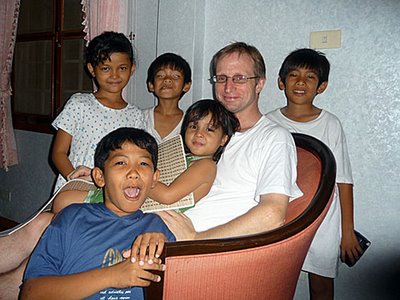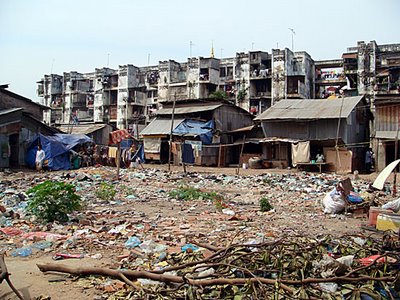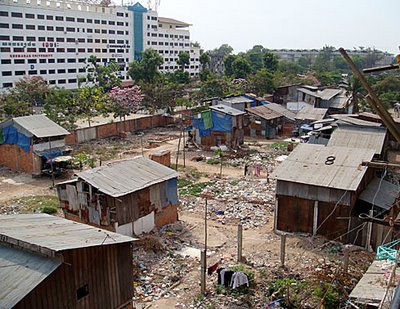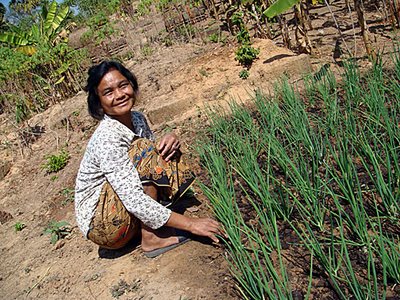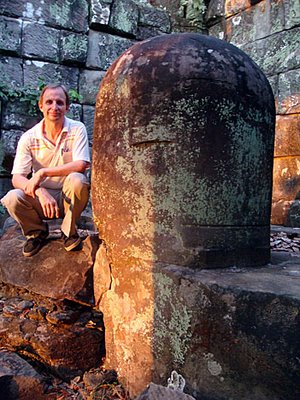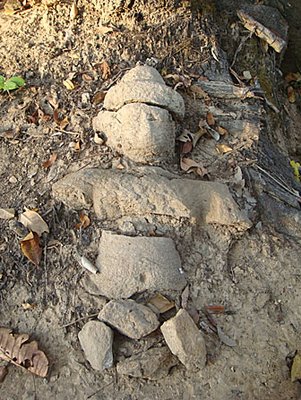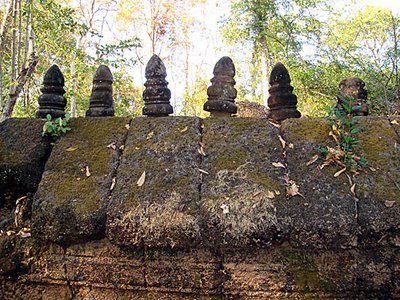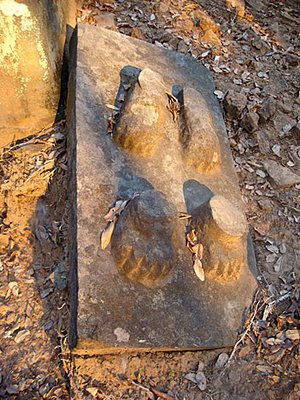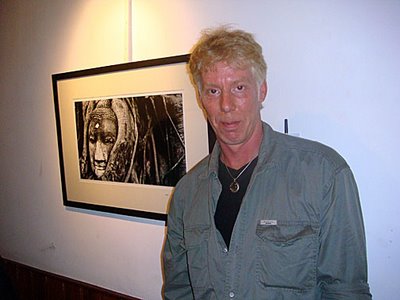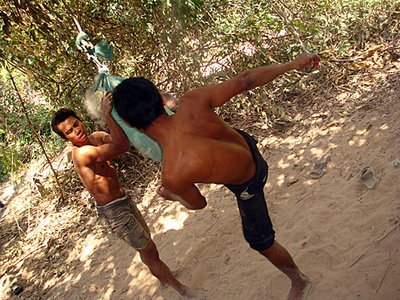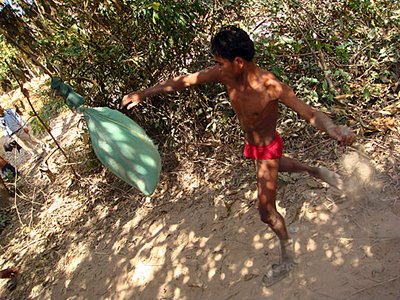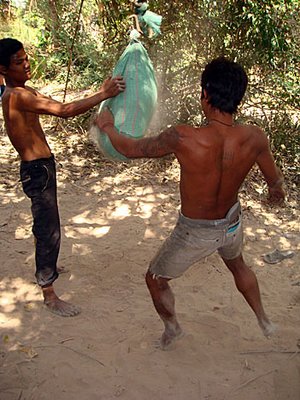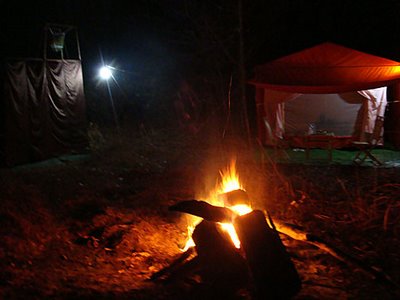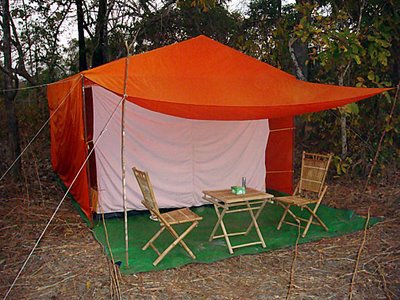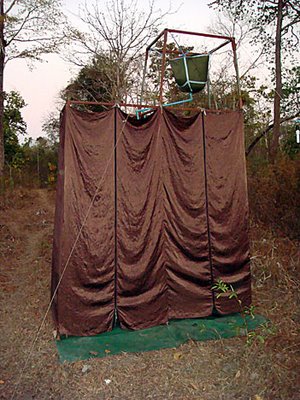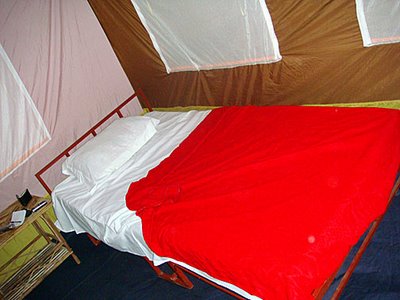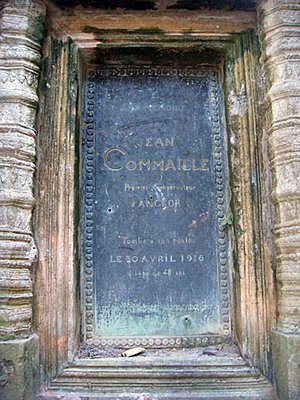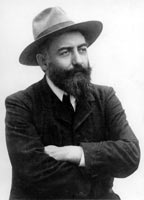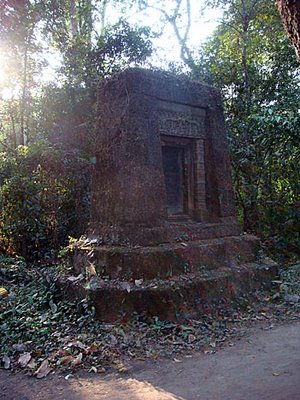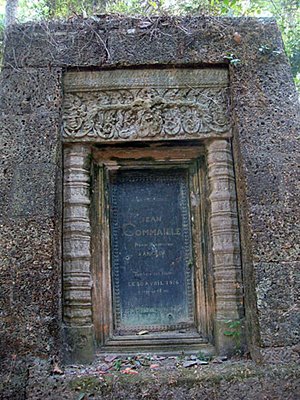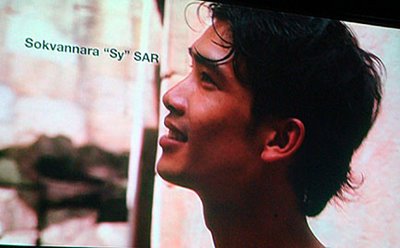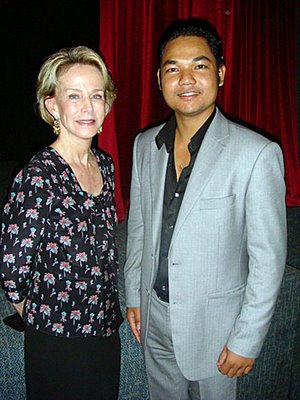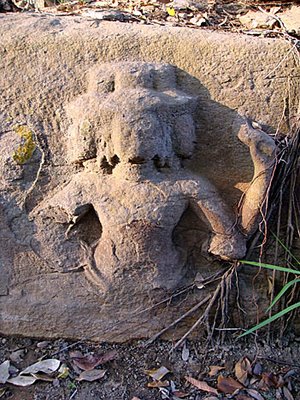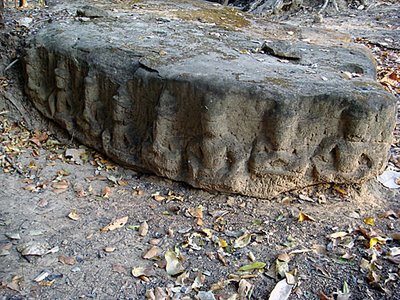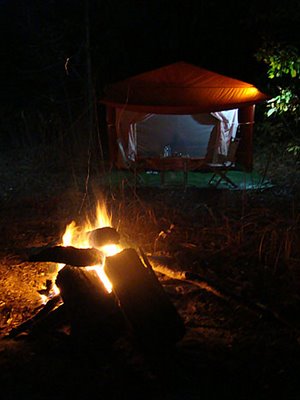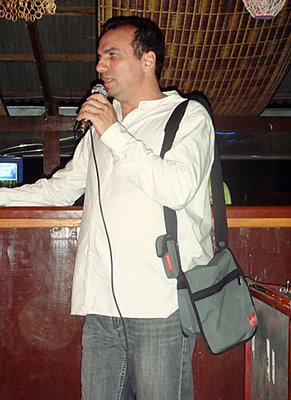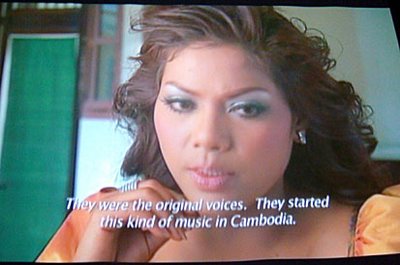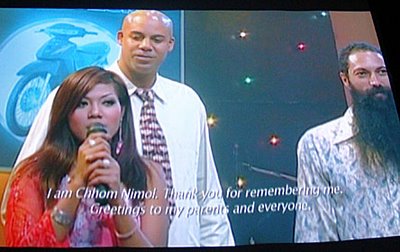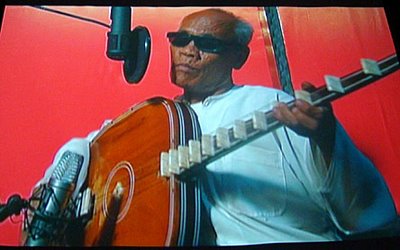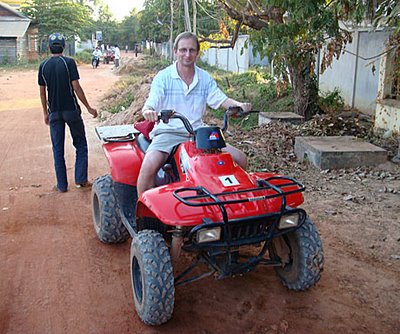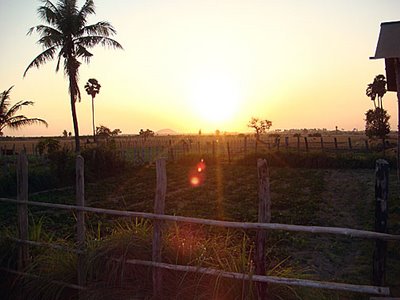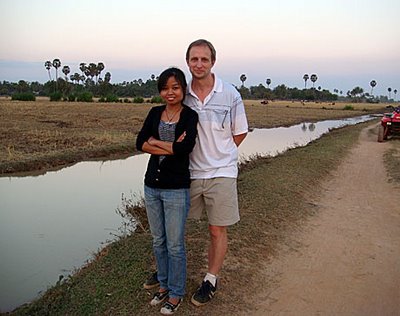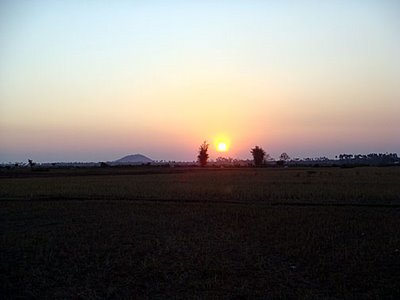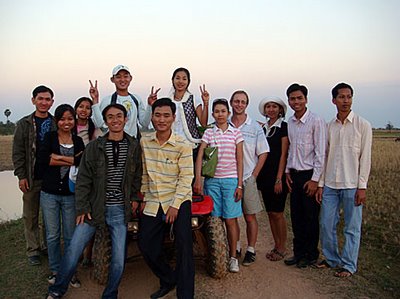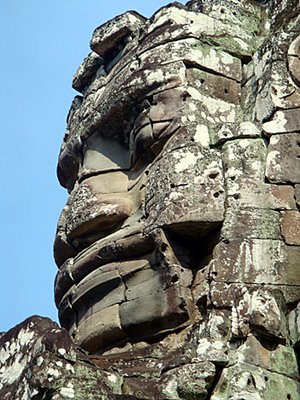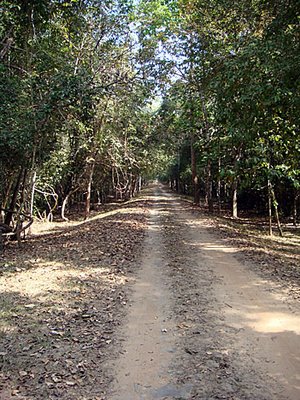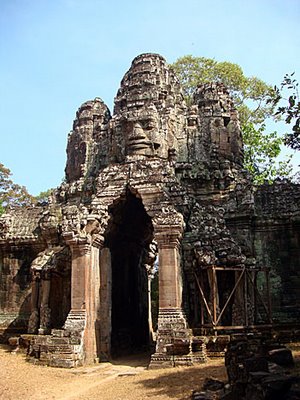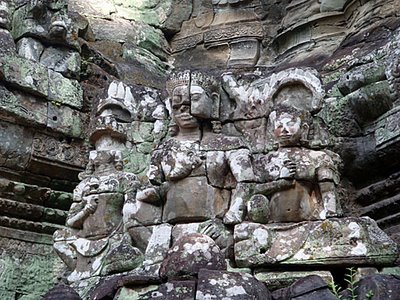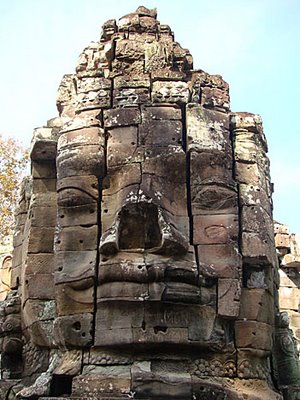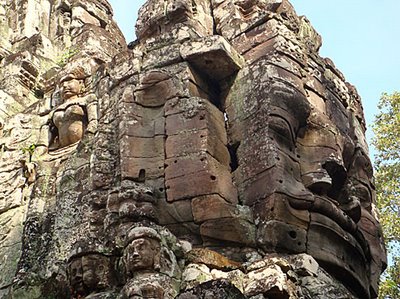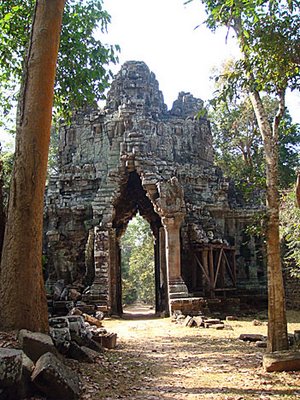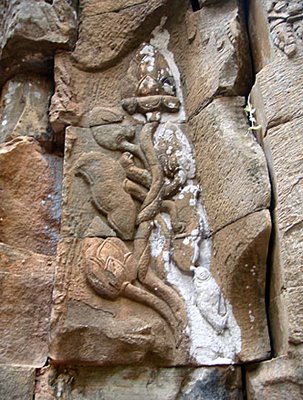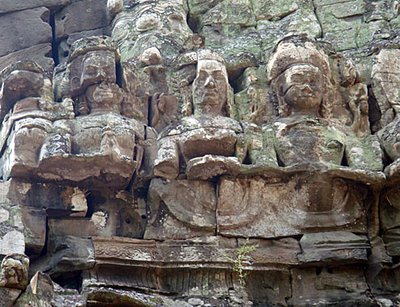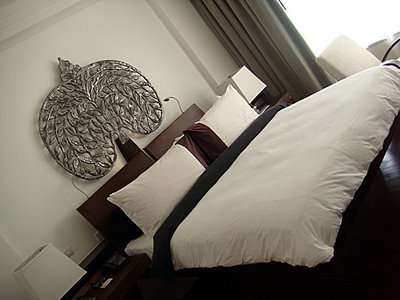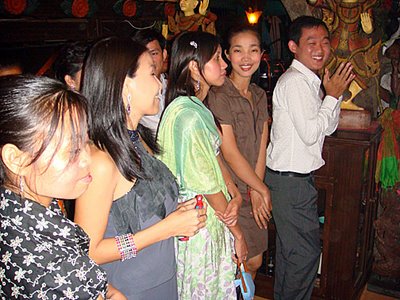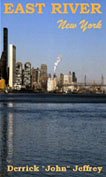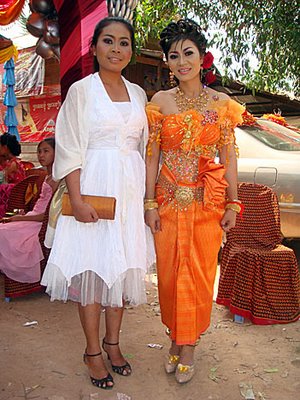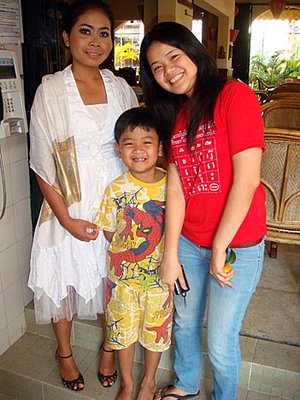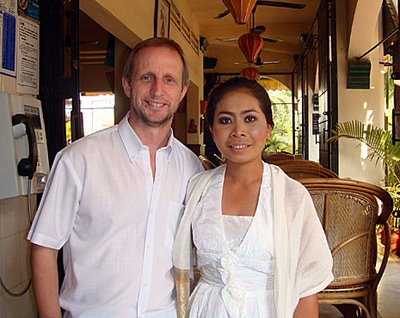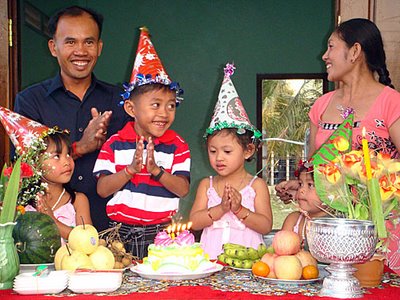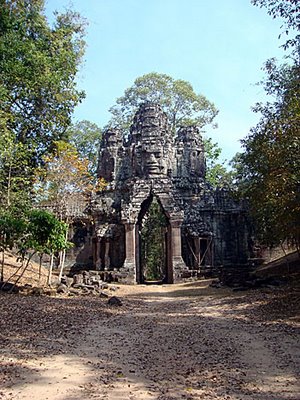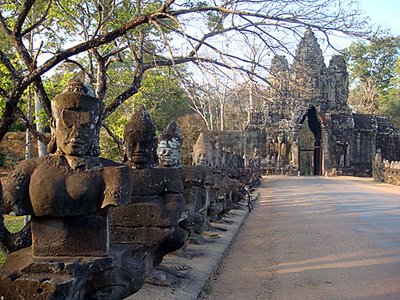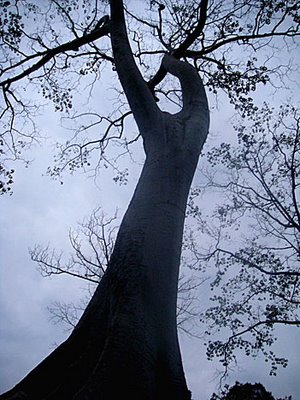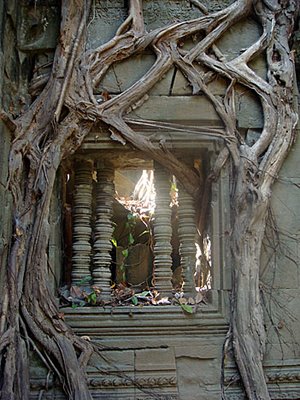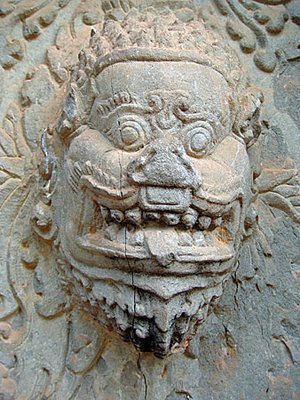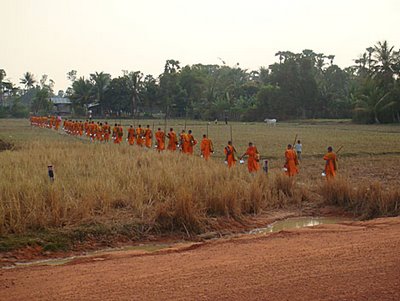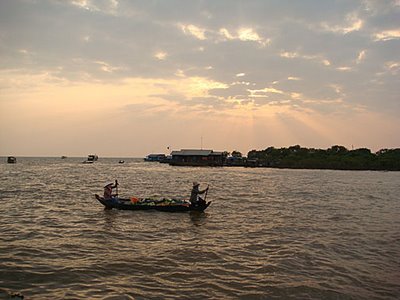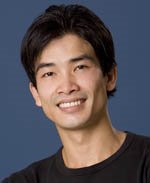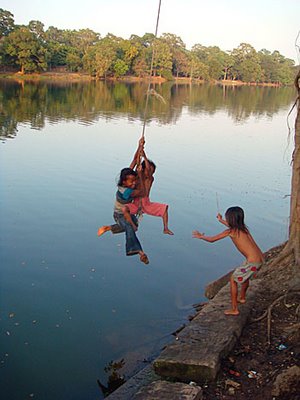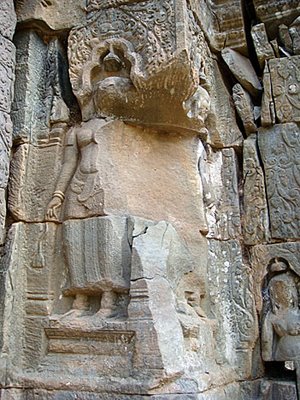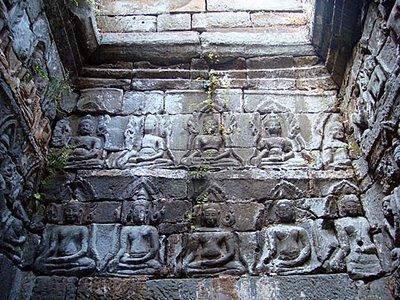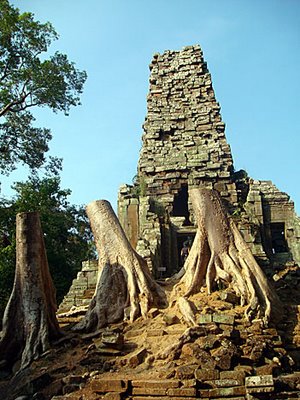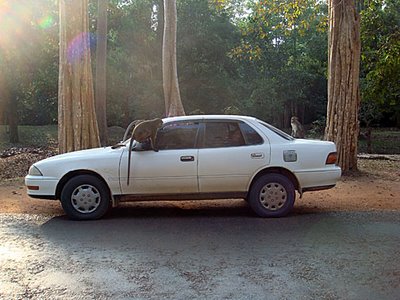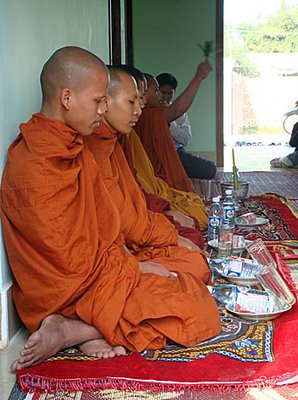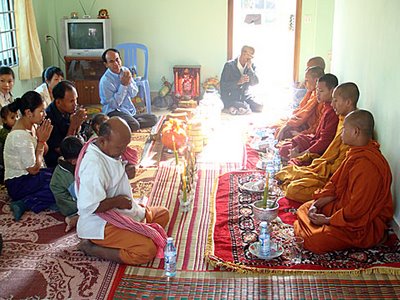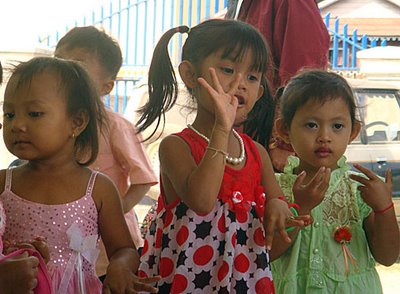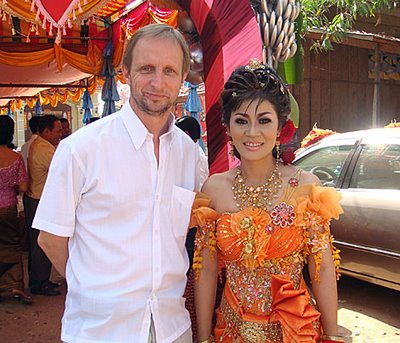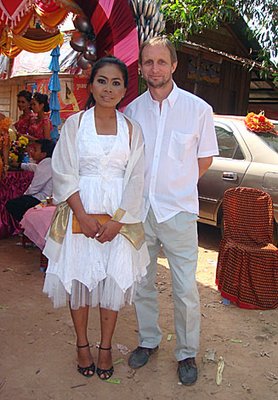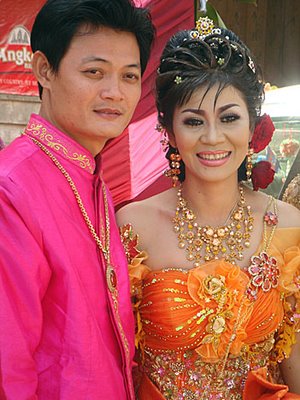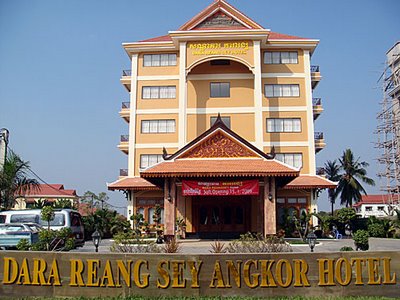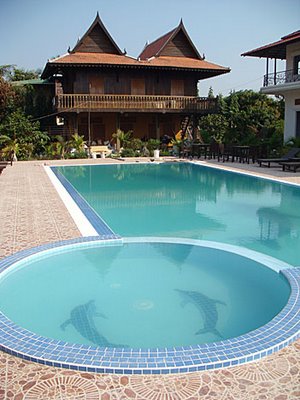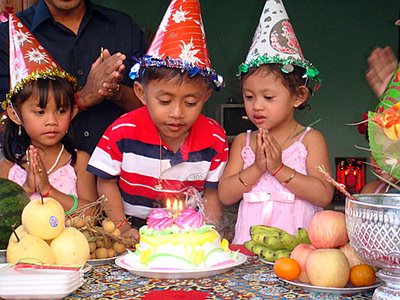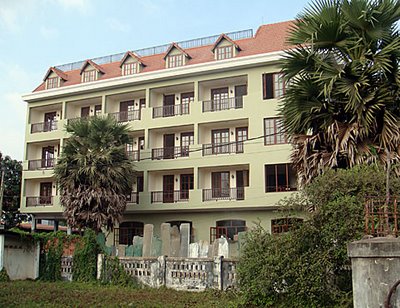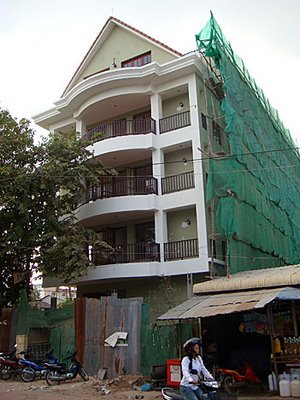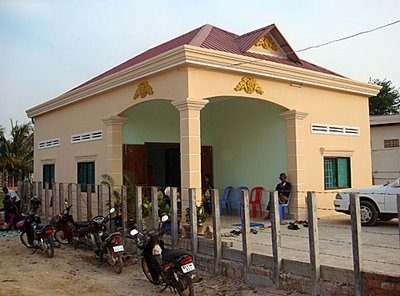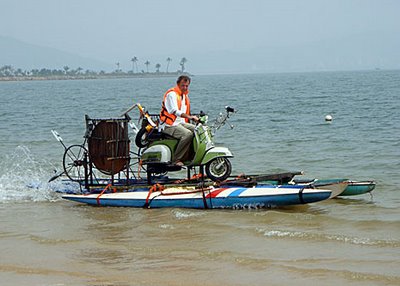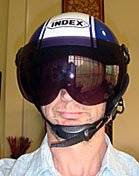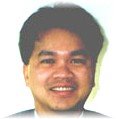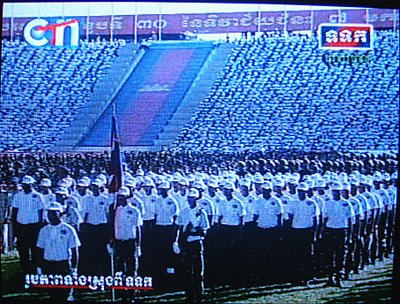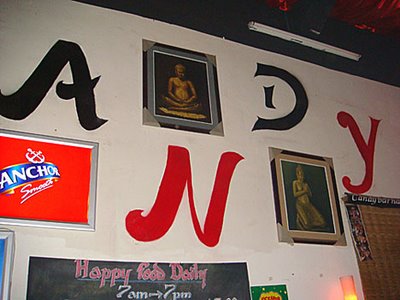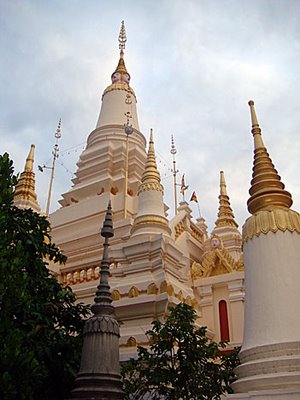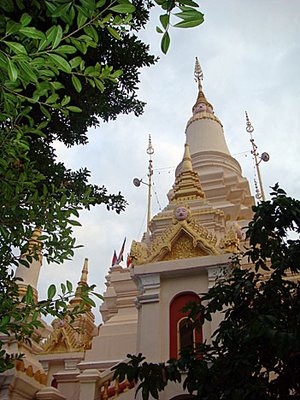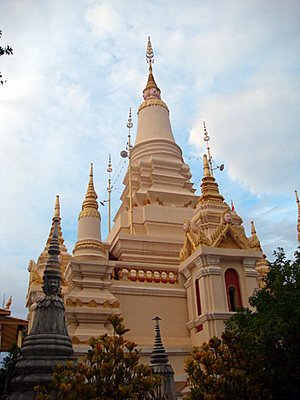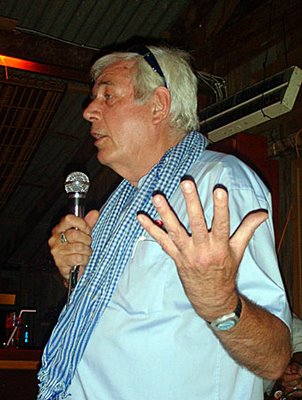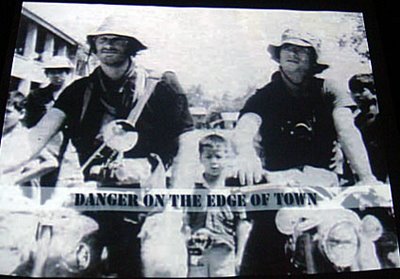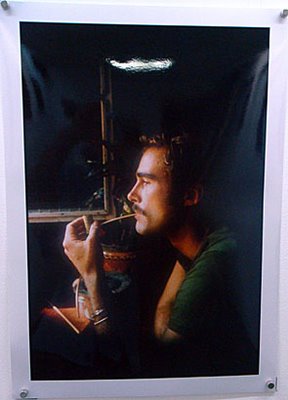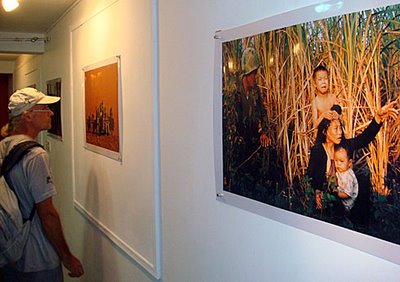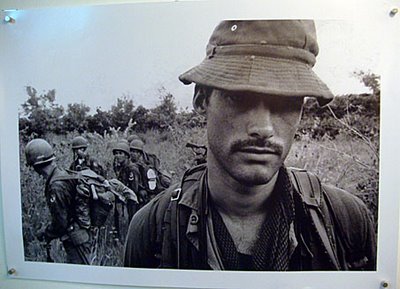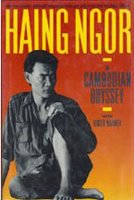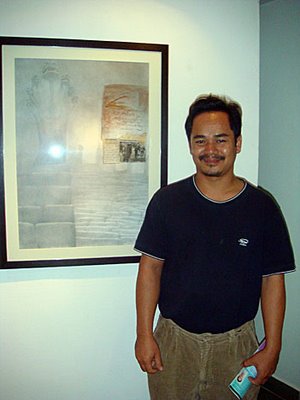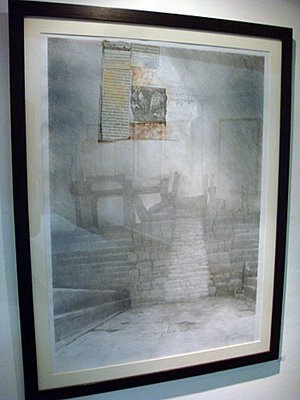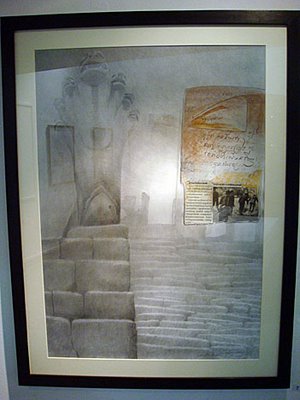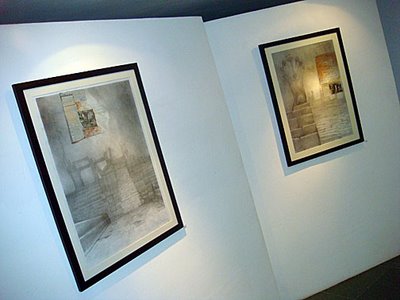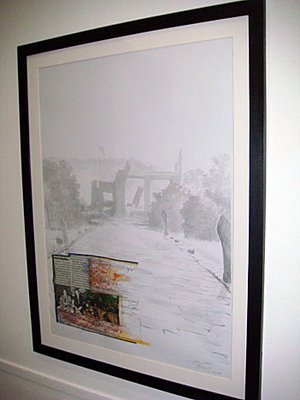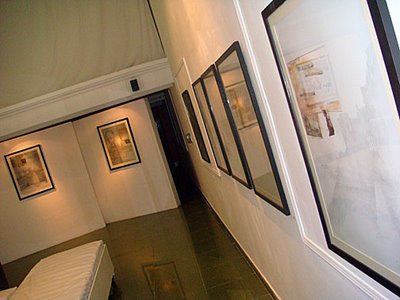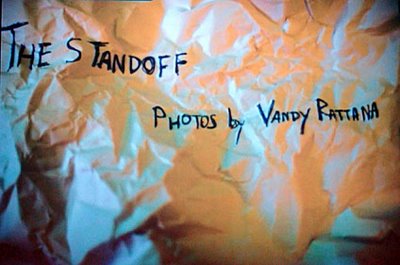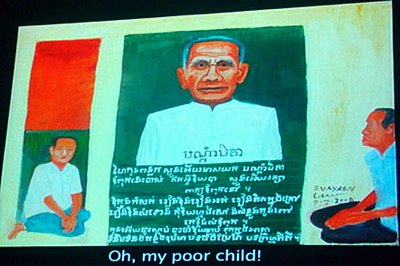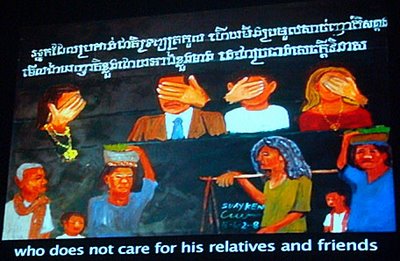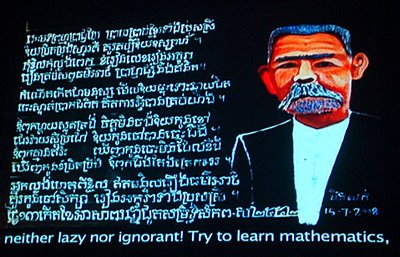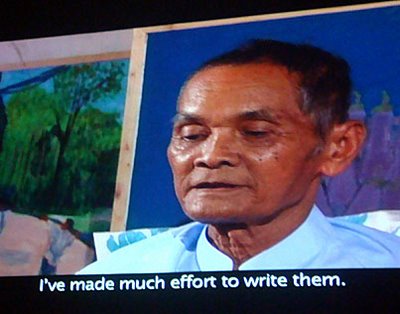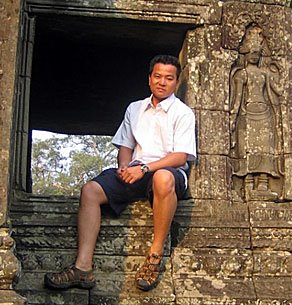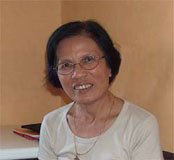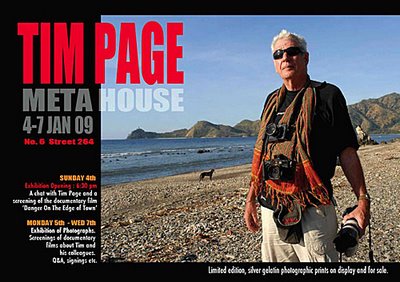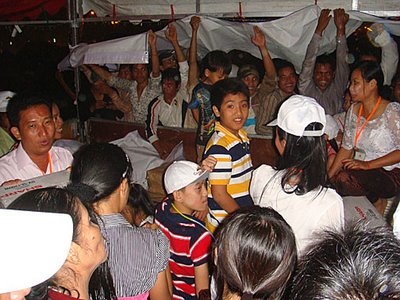A few days ago I posted a short
article on
Sarorn Ron Sim and his career as a photographer, film camerman, producer and more besides. At the same time Sarorn posted this article to his own blog which is definitely worth re-posting here so you can find out more about his early childhood in the border camps on the Cambodian-Thai border in the early 1980s.
Between Heaven and Earth: KD17506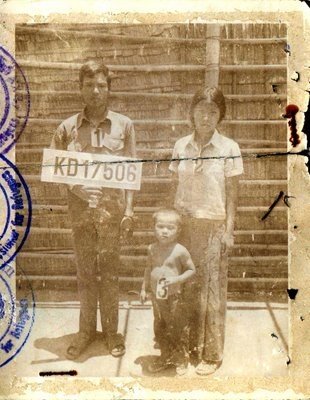 Photo by: UNHCR/KD17506/ Refugee Camp II/Thailand 1984
Photo by: UNHCR/KD17506/ Refugee Camp II/Thailand 1984This picture is my story. An image that speaks for every fiber of my soul, every reason for my being. It is, in many respects, the image that I've longed to recapture. Every time I look at this image, I am born again. A constant reminder at the journey we've been through as a family, as refugees, as survivors of war and genocide. It is a reflection of me that I will cherish for the rest of my life.
From 1975 to 1979, my parents were separated from their family, torn apart by civil war in Cambodia - a spillover from the war in nearby Vietnam. Lead by Pol Pot, the Khmer Rouge began a campaign to exterminate anyone who could rise against them: doctors, teachers, monks, and civil servants - anyone who had a voice. The rest were put to toil in slave camps through out the country - working 16 hours on one meal a day. Those who received a bullet to the head were considered lucky - the rest were left to starve. By the end of their reign in 1979, over 2 million Cambodians had perished, half of Cambodia's population. It was later dubbed by the international community as the Killing Fields of Cambodia. In July of 1979, my parents escaped the slave camp they were in. Walking for 3 days without food or water through dense jungles littered with landmines, they finally made it to the safety of a UN refugee camp along the Thai-Cambodian border. In December of 1980, I was born.
Sitting here tonight, I am neither embarrassed nor ashamed to tell this story. In fact, I'm rather proud. Proud of my parents. Proud to be their son. But as I gaze upon this image, sorrow invades my soul. I remember the hardships we faced, the hunger we felt and the poverty we endured. Combined with a constant barrage of robbing and looting from within the camp, we were forced to live our lives in constant fear. At night, the stars would illuminate the sky, lighting a path for us to run for safety from within our very own safety zone - as Thai soldiers would invade our camp, sometimes, taking everything we had--our pots and pans, pillows and blankets. Life as refugees meant you were nothing more than an international homeless person.
The first five years of my life was spent there. I don't remember much, but what I do remember most was the hunger and fear - it's something you can't forget, no matter how old you are. On a weekly basis, aid workers would hand out rice and tuna, but it was never enough. Sharing food rations between the three of us, there were times when my parents did not eat, so I could. People died from eating whatever they could find in the jungle.
This picture is a testament to our survival. Sometimes, I envision myself behind the camera, the photographer taking this picture. I wonder if he or she had ever imagined that an image like this could have such a profound effect on ones life. I wonder what the photographer was thinking... As old and torn this picture may be, it is the picture of my family that I treasure in my wallet - reminding me of my haunting past. I've come a long way, that' s for sure. But when people ask me how I got started doing what I do or what motivates me while I'm shooting, I show them this picture - and just like that, they understand. I hope you understand too...
As I'm typing this, a silky-smooth layer of oil and sweat slowly creeps to the tip of my fingers. My heart pounds to the beat of every key stroke, while and my mind spins to the tune of faded memories from long ago. Faded, but never tarnished. I never thought I'd post about my journey - never knew anyone would be interested, except for the few who find my life fairly fascinating, if at all. I'm no one special. Not a writer, nor a preacher. Just an average Joe who eats at your local diner, drinks from the carton and sleeps til noon whenever he can. As as child, I went to public school, played little league hockey, went Trick-or-Treating, and enjoyed snapping girls bras. Heck, in college I even once dressed up as Santa for a
children's Christmas party when the original Santa fell sick. An Asian Santa. Wow.
By all accounts, I had a normal upbringing. And today, if you were to look me straight in the eye, you'd never
believe my story. You'd say I'm lying. You'd say I'm full of shit. But
believe me when I say this: "war is no lie." It's not easy telling your friends that you're a child of war. While growing up in Canada, I never did. I hid it deep within me. I was ashamed. I was ashamed to be called a refugee, an immigrant, a minority. I was ashamed to say I am Cambodian. My face would turn red and I'd stare at my feet while the other kids laughed and giggled in amusement. Cambodian. Where's that?
My parents worked twelve hour days, seven days a week. When I got home from school, I'd cook for myself,
vacuum the house and made sure the meat was defrosting so mom could make supper when she arrived. On weekends, I'd go to church when my neighbors invited me. When it was a Buddhist holiday, my parents would take me to a temple. They never discriminated. I was taught to love, to cherish each other and to forgive. They never cared if that message came from Jesus, Buddha, or Allah. A far cry from the world they had left behind.
It's interesting when you think about it. They've gone through so much pain and suffering, yet, they still find it in their hearts to forgive. To forgive the soldiers who killed their families, robbed them of their childhood and raped them of their freedom. To forgive, but never forget. Some nights, when my mother couldn't sleep, I'd see her sitting alone, arms crossed, eyes glistened in pain. I'd ask her what's wrong - and slowly, she'd raises her head and look deep into my eyes. Her voice trembled in sorrow, her face washed in fear. As a child, she would stay up at night and wait for her father to return from the farm. They would spend hours every night,
reminiscing about life and times gone by, planned her future and imagined dreams coming true. He'd tell her everything that happened in the village that day, not even the slightest gossip could escape his ears. For a twelve year old, it was the best part of her day. One night, as she heard her father coming up the steps, she pretended to fall asleep - just to see his reaction. She laid still. Her father, realizing that he had worked late that day, stood there and watched her in silence. He said a prayer for her and closed her door. The next morning, the Khmer Rouge invaded her village. Lives shattered like broken glass. Blood seeped into the ground, forever leaving
their mark for reincarnated souls. Piles of bodies flood the landscape while those who escaped ran for their lives, only to be caught and forced into slavery. She never saw her father again. I'll never forget that night when she told me this story. I was twelve.
Today, I'm writing for you this story - not to make you
weep or to cause you pain, but more
importantly, for myself - for a soul looking for closure, looking for light. If I could, I'd take back every moment I felt ashamed, every instance I felt sorry for who I am and where I'm from - I'd take it ALL back. As I read the comments that you have generously posted, I find solace in knowing that I'm not alone. And even though I've never graced your
presence, I know that there's a world out there that understands the complexity of our being, the triumphs and tragedies of human kind. From the depths of my heart I thank you for reading and for understanding. May peace be with you.
Link: Ron's blogLabels: Sarorn Ron Sim
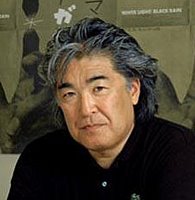 marched blindfolded into Tuol Sleng in Phnom Penh by their Khmer Rouge captors before being interrogated and then murdered, will be up for an Oscar later next month at the Academy Awards. Steven Okazaki's (pictured right) haunting story, The Conscience of Nhem En, looks behind the photos you see on the walls of S-21 at the man who was behind the camera and interviews three of the few survivors to have made it out of that hell hole. The absence of any feelings of remorse by Nhem En is chilling. ''I was only one screw of the machine. I did nothing wrong except taking photos at the superior's order,'' he claims. It will be the director's fourth Oscar nomination - he won best short in 1990 - for this short documentary, which he filmed in January of last year. It is his third film in a series of short personal documentaries, Three Journeys, which includes the Mushroom Club, a look at Hiroshima sixty years after the atomic bombing, and Hunting Tigers, a quirky look at Tokyo pop culture. Then Nhem En was a sixteen year old following orders, today he's deputy governor in Anlong Veng and has announced plans to build his own museum in the town, filled with his photographs and other KR memorablia. To find out more about the director, click here.
marched blindfolded into Tuol Sleng in Phnom Penh by their Khmer Rouge captors before being interrogated and then murdered, will be up for an Oscar later next month at the Academy Awards. Steven Okazaki's (pictured right) haunting story, The Conscience of Nhem En, looks behind the photos you see on the walls of S-21 at the man who was behind the camera and interviews three of the few survivors to have made it out of that hell hole. The absence of any feelings of remorse by Nhem En is chilling. ''I was only one screw of the machine. I did nothing wrong except taking photos at the superior's order,'' he claims. It will be the director's fourth Oscar nomination - he won best short in 1990 - for this short documentary, which he filmed in January of last year. It is his third film in a series of short personal documentaries, Three Journeys, which includes the Mushroom Club, a look at Hiroshima sixty years after the atomic bombing, and Hunting Tigers, a quirky look at Tokyo pop culture. Then Nhem En was a sixteen year old following orders, today he's deputy governor in Anlong Veng and has announced plans to build his own museum in the town, filled with his photographs and other KR memorablia. To find out more about the director, click here.